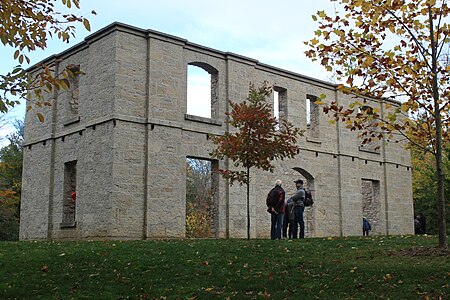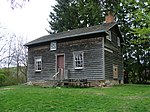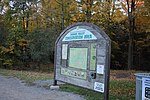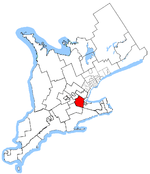The Hermitage (Hamilton, Ontario)
1830 establishments in Upper CanadaMuseums in Hamilton, Ontario

The Hermitage was a large residence situated in Ancaster, Hamilton, Ontario, Canada, which now exists as ruins and is part of The Hermitage and Gatehouse Museum maintained by the Hamilton Conservation Authority. The location is a popular destination for hikers and people interested in the paranormal.
Excerpt from the Wikipedia article The Hermitage (Hamilton, Ontario) (License: CC BY-SA 3.0, Authors, Images).The Hermitage (Hamilton, Ontario)
Main Loop (Bruce Trail), Hamilton
Geographical coordinates (GPS) Address Nearby Places Show on map
Geographical coordinates (GPS)
| Latitude | Longitude |
|---|---|
| N 43.2401 ° | E -79.9989 ° |
Address
The Hermitage 1855
Main Loop (Bruce Trail)
L9G 4P8 Hamilton
Ontario, Canada
Open on Google Maps




